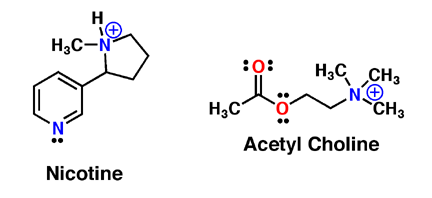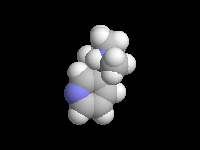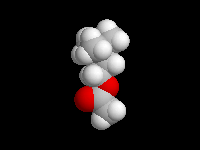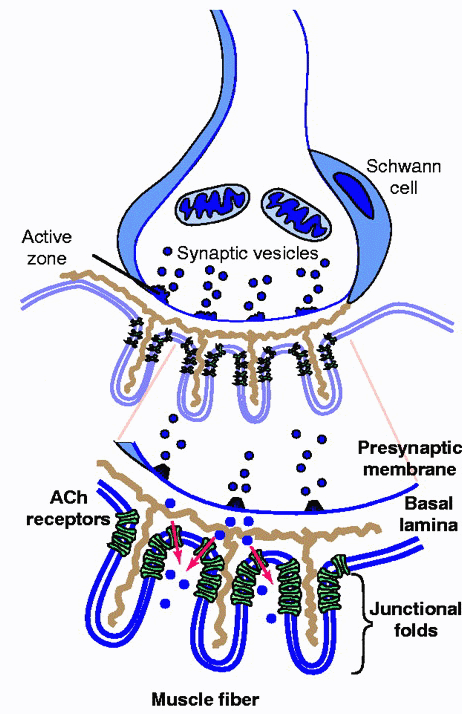



Acetylcholine is a neurotransmitter. It transmits nerve impulses from nerve to nerve via receptors at nerve endings. The neurotransmitter is released by one nerve cell, then taken up by specific receptors on a neighbor nerve cell, which then fires, continuing the chain. The junction between nerve cells where the neurotransmitter is released is called a synapse. Several kinds of synapses are shown in the figure above, which comes from "The Developing Synapse: Construction and Modulation of Synaptic Structures and Circuits", Susana Cohen-Cory, Science, 2002, 298: 770-776. Acetyl choline type of synapse, called "cholinergic" synapses are shown on the far right. ACETYLCHOLINE SYNAPSES ARE THE ONES TARGETED BY "NERVE AGENTS" SUCH AS SARIN GAS, THEY ARE THAT IMPORTANT!
Nicotine has a similar shape and charge distribution to acetylcholine (see below), so it binds in acetylcholine receptors and causes the receptors to respond. These are called nicotinic receptors. NICOTINE THUS MODULATES THE ACTIVITY OF THESE KEY ACETYLCHOLINE RECEPTORS. THIS IS POWERFUL STUFF! A high dose of nicotine is fatal!!!!!
A low dose of nicotine, such as that obtained through smoking a cigarette has excitatory effects. It increases heart rate, simulates sensory receptors, raises blood pressure, etc. It is addictive because this increased feeling of "excitement" actually resets the nervous system to operate at normal levels only in the presence of nicotine. Without nicotine, the person notices a difference. It is this resetting of the nervous system at the molecular level that makes nicotine addiction so difficult to overcome while a person quits smoking.
Interesting references include a general article about tobacco use and nicotine addiction, an article that describes just some of the effects of smoking on children of smokers, and smoking among college women.
